Polyoxymethylene (POM), commonly referred to as acetal or Delrin, is a high-grade engineering plastic appreciated for its superior mechanical strength, rigidity, and minimal dimensional changes. As a result, POM can find applications in diverse fields – from automotive to electronic and consumer products for parts that require accuracy, toughness, and wear resistance. This write-up is a quest to understand the material pom specification its applications and the reasons it is still a very common material with manufacturers and engineers. If you are a designer yearning to understand this material’s mechanical advantages or a product developer looking for materials for adverse conditions, then this article has all the information of POM and how it is advantageous in contemporary manufacturing systems.
Brief Introduction of POM
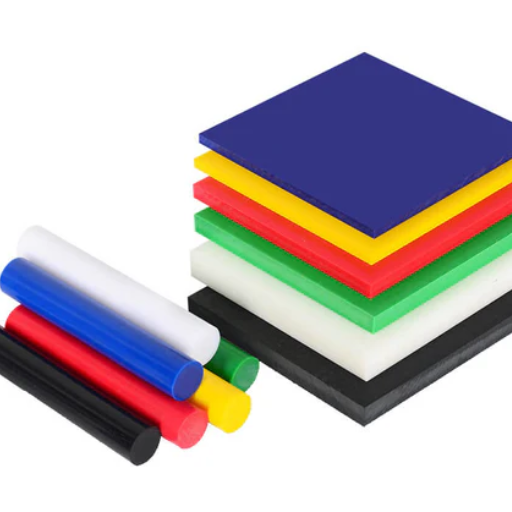
Polyoxymethylene (POM), also called acetal, is an engineering thermoplastic that has a high performance because of the superiority of its strength, rigidity and shape. It is a low-friction solid with good wear resistance and good chemical stability, and thus, for mechanical and industrial reasons, it is mostly used in applications. Its capability to withstand heat in a temperature range and the ability to stay un affected by moisture also increases its numerous uses in precision components like gears, bearings and fasteners. With these qualities, POM is considered an all-purpose material for engineers and manufacturers, knowing that the quality and the promise of performance without fail are all assured.
What is POM?
Polyoxymethylene (POM) also its known trade name is Acetal or Polyacetal is one of the High Performing Engineering Thermoplastics for mechanical use and high dimensional stability in most application. Formed from the polymerization reaction of formaldehyde, POM is a semi-crystalline polymer with a very stiff structure and a very low friction factor. It is very wear, fatigue and chemical resistant, making the material perfect for the application it was named for all sectors, automotive, electronics and machines.
Introducing POM with reference to its melting point, which is generally within 150°C to 175°C, and tensile strength of more than 60MPa, this material is made to withstand very high stress levels in which the working environment proves hostile. In addition, its structure remains nearly unchanged over a broad temperature range; it is often used in the construction of lightweight gears, valves, bushings and other components. Further additions in compositions such as pure copolymer and homopolymer have made it more heat resistant and less degradable to water, which facilitated further exploration of alternative industries.
Types of POM: Homopolymer vs Copolymer
|
Key Point |
Homopolymer POM |
Copolymer POM |
|---|---|---|
|
Composition |
Pure polymer structure |
Includes comonomers for stability |
|
Crystallinity |
Higher |
Lower |
|
Superior |
Slightly lower |
|
|
Thermal Stability |
Lower resistance |
Higher resistance |
|
Resistance to Hydrolysis |
Lower |
Improved |
|
Resistance to Alkaline Environments |
Poor |
Better |
|
Wear Resistance |
Excellent |
Good |
|
Dimensional Stability |
Higher |
Comparable |
|
Processing Temperature |
Narrow range |
Broader range |
|
Cost |
Generally higher |
More economical |
|
Applications |
Gears, bearings, precision parts |
Valves, bushings, fittings |
Key Characteristics of POM Plastic
- High Mechanical Strength and Stiffness
POM has very good mechanical properties, including Tensile Strength in the range of 60 – 70 MPa, with Xerox-polyester flexural Modulus ranging from 2,400 to 3,300 MPa in different formulations. Hence, it may be attractive as a material for different parts which are subject to excessive mechanical loads.
- Low Friction and Excellent Wear Resistance
Polyoxymethylene (POM) with low friction properties of approximately 0.2 enables a smooth movement of parts in sliding applications with minimal wear even despite frequent use. Such characteristics minimizes the use of lubricants in mechanics components such as gears and bearings.
- Thermal Stability
POM can withstand the wide temperature range of mainly –40°C to 120°C although some grades can be used at even 140°C in intermittent applications. This enables manufacturing in various environments where conditions may drastically change or where the device has to be in place for a long period of time.
- Dimensional Stability
In conditions of minimal absorption of moisture, less than 0.2% at equilibrium, POM allows parts with very tight tolerance levels through increased shape stability.
- Chemical Resistance
POM is generally resistant to many chemicals including fuels, oils, infinite alcohol and weak acids however it is not very resistant to strong acids or bases or oxidizing agents. This makes it a reliable material for use in chemical environments.
- Electrical Insulation Properties
For normal thicknesses it has a tunnel breakdown application of over 20kV/mm and pronounced insulating abilities, hence POM is predominantly utilized in electrical components where the manufacturing – durability safety and reliability are concerned.
Mechanical Properties of POM
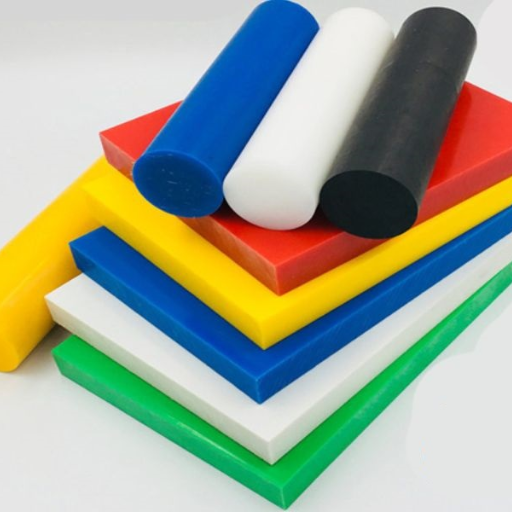
Polyoxymethylene (POM), due to its outstanding “workability,” has a vast range of uses in stressful conditions. Among the notable features are its high resistance characteristics as follows:
- High Strength and Stiffness
POM is thermostable and stiff, which enables it to maintain structural stability even when loaded with a high/strong load, such as in the case of thin-walled products
- Low Friction and Wear Resistance
The material offers a low coefficient of friction and is excellent in wear resistance, making it a perfect material for applications such as components of sliding or turning substances like gears and ball bearings.
- Dimensional Stability
Being almost free from creep, POM does not produce any significant changes in dimensions even under load or under varying environmental conditions regardless of the load, allowing for its application in various wear and/or high-stress performance conditions.
The combination of these mechanical properties suggests that polyoxymethylene will be one the highest performing and has the longest fatigue life in almost all the areas of mechanical and industrial uses.
Hardness and Strength
Polyoxymethylene is characterized by its hard texture and is not flexible in terms of the structure’s stability. This makes it suitable for applications where high integrity and structure are required. POM usually has an M80 to M90 Rockwell hardness, where it can provide adequate resistance against surface indentation and abrasion, which are important factors affecting its use under high-friction conditions. The tensile strength values of the material lie between 60 MPa and 75 MPa and this is the stress level that the material can handle without undergoing any mechanical deformation or normal stress failure. Furthermore, POM can retain its properties in a wide range of temperatures, somewhere between -40°C and 120°C, making it operational in cold and hot regions. These properties support the fact that POM is one of the indispensable materials in designing penting components that withstand a single or continuous load and in excess of functional stresses.
Dimensional Stability of POM
Polyoxymethylene, also known as POM, has an exceptional and rather remarkable characteristic; that is, its mechanical consistency is well maintained, particularly when related to precision parts with strict dimensions. The organic polymer has the virtue of a very small coefficient of thermal expansion, of about 8×10⁵ to 10×10⁵/°C, so its volume will still remain largely the same during temperature changes. It is not documented precisely, but POM shows an extremely weak ability to soak. The values are usually 0.2% or less at standard conditions, and such a property excludes any risks of expansion or distortion in the presence of high humidity. This, in turn, supports the steady operation of the product over time. As a result of these excellent traits, POM can be said to have an unchanging appearance and capability, even in hot mechanical strain, temperature effects, or use and exposure to the environment while built, thus ensuring good quality when it is applied in critical engineering and industrial fields.
Comparison with Other Engineering Thermoplastics
|
Property/Parameter |
POM (Polyoxymethylene) |
Nylon (Polyamide) |
Polycarbonate (PC) |
Polyethylene (PE) |
|
|---|---|---|---|---|---|
|
Tensile Strength |
High |
Moderate |
High |
High |
Moderate |
|
Impact Resistance |
Moderate |
High |
Moderate |
Very High |
High |
|
Thermal Resistance |
Up to ~175°F (~80°C) |
Up to ~176°F (~80°C) |
Up to ~302°F (~150°C) |
Up to ~257°F (~125°C) |
Up to ~140°F (~60°C) |
|
Moisture Absorption |
Low |
Low |
High |
Low |
Very Low |
|
Friction Coefficient |
Very Low |
Moderate |
Low |
Moderate |
Very Low |
|
Chemical Resistance |
High |
Low to Moderate |
Moderate to High |
Moderate |
Very High |
|
Dimensional Stability |
Excellent |
Good |
Moderate to Good |
Excellent |
Moderate |
|
Ease of Machining |
Good |
Excellent |
Difficult |
Moderate |
Excellent |
|
Cost |
Moderate |
Low |
Moderate |
High |
Very Low |
|
Common Applications |
Gears, bearings |
Consumer goods, toys |
Textiles, auto parts |
Lenses, safety equipment |
Packaging, containers |
Molding and Extrusion Techniques
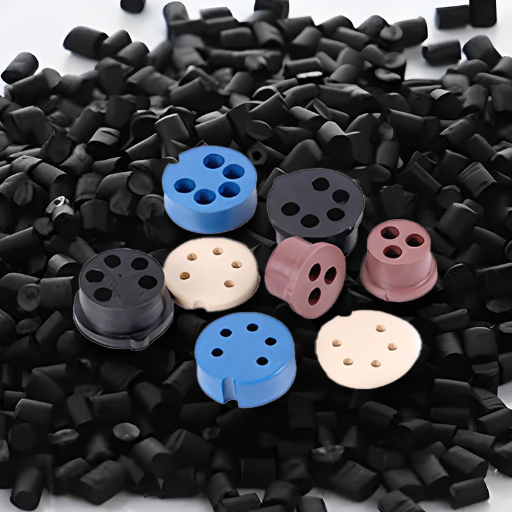
Molding and extrusion are the two most commonly used techniques for thermoplastics processing, i.e., engineering thermoplastics like Polyoxymethylene (POM). Molding truly means the injection molding of molten POM into a preset cavity to a tolerance of a few microns to a few millimeters to get a desired shape or part, a process known as molding. The process is most suitable for applications requiring high-dimensional accuracy and predictability of the part shape and position.
Extrusion, on the other hand, involves forcing the molten POM out through a shaped die to produce long lines such as rods, plates, or tubes. This method is particularly ideal for the production of articles that cannot be directly cut or converted into usable objects that are semi-finished by machining. Both methods, for example, demand proper regulation of the processing parameters like temperature and pressure to prevent changes in the material properties and finished product quality to date.
Injection Molding of POM
Injection molding of POM (Polyoxymethylene) is a process that must be accurately controlled in order to achieve the desired results in terms of material properties and molded part accuracy. The commonly used temperature for the processing of POM parts is 170°C – 230°C with the genealogy settings including the material grades. Mold temperatures are normally maintained at 80°C to 120°C to facilitate proper crystalline structures and finish the parts.
On the other hand, the molten state of POM has relatively low viscosity, which facilitates high flowability, making it possible to produce components of complex geometries and high precision. Nevertheless, considering that there is also a high rate of linear shrinkage, a waste molding technique will be vital to avoid uneven warping and shrinkage of the part after molding which is within the range of 1.5% to 2.5%.
Extrusion Processes for POM Products
Polyoxymethylene (POM) extrusion is related to the process of guiding a molten polymer into a certain shape by continuously applying it through a channel until it is cast as an article, profile, rod, sheet or tube. In this regard, it should be noted that there are crucial aspects in POM extrusion – all sorts of temperature control, design of the screws and dies. These parameters determine the quality and application of the product obtained from extrusion. Such extrusion of POM requires temperatures between 170°C and 210°C, depending on the grade of the POM and the viscosity of the melt. In order to obtain a product of satisfactory quality, it is necessary to employ a well-designed screw with compression ratio ranging from around 2.5 to 3.0, for instance, where high melt homogeneity is required and thermal degradation is limited.
The last consideration is with regard to the design. An understanding of the substantial effects of die design on the dimensions and appearance of POM extrudates provides the link to manufacturing practice. For extrudates like tubing and profile, the application of die pressure along with cooling in an efficient manner is needed to overcome anomalous results due to warping, in-welling or deformation. Following a period of forming and extrusion, the product is allowed to cool by use of water baths, which gives the polymer time to resettle. In terms of assembly, the calibration and pulling systems must interact correctly so that consistent extrusion speeds are achieved and variations or deflections in finished product lengths do not occur.
POM Material Grades and Specifications
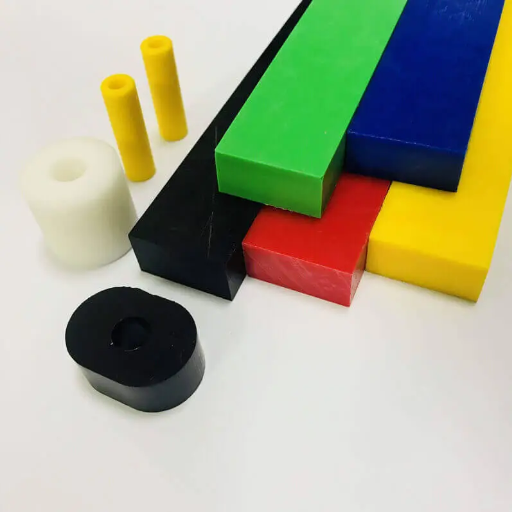
POM (Polyoxymethylene) is usually made in two main forms: Homopolymer (POM-H) and copolymer (POM-C). Both are designed for high mechanical strength, stiffness, and stability. Each having unique properties, which to some extent make the two incompatible:
- POM-H (Homopolymer): Very stiff compared to the other two but above average strength, adequate resistance to fatigue. It is usually used in many applications which requires greater extent of mechanical properties, including strength, where they have lower thermal resistance than the copolymer in their operation.
- POM-C (Copolymer): Better use characteristics under high operating temperatures and improved chemical resistance, such as the corrosivity of bases. Less rigid than the former, it is better behaved with regards to dimensional changes under high temperatures.
These include other forms such as glass filled, soft touch, and ultraviolet light resistance which are custom made for certain applications. The choice of the material to be used in shaping depends on certain demands of a particular application, such as considering structure, exposure, and temperature in operation.
Overview of POM Grades
Mechanical grades of POM are formulated in varying special avoiding possibilities for some engineering problems. Regular unjugated grades of POM are super wear resistant, have low internal friction, and are very easy to machine. It is why these materials are convenient for the most general applications, such as grasps, wheels, case bearings, etc.
Formaldehyde Emission Considerations
Material safety has always been concerned with the emissions caused by formaldehyde due to issues of health and indoor air quality. For example, these can cause irritation to the respiratory system and other adverse effects when the levels are also in appreciable amounts within a structure. Presently, formaldehyde is set out in some regulations, such as by the Environmental Protection Agency (EPA) and European Chemicals Agency (ECHA), targeting certain materials, particularly wood-based composites, adhesives, and their respective formulations and products, to restrict or, in other words, reduce the free formaldehyde levels. Testing methods like chamber tests (ASTM D6007) and emission measurements in a desiccator (JIS A 1460) are used to determine formaldehyde emissions accurately. In addition, there have been developments in some materials with low emissions of resin and or additives towards achieving conformances like CARB Phase 2 or ULEF (Ultra-Low-Emission Formaldehyde) qualifications. These advances point to a great improvement in security while retaining functionalities in the application and the constituent materials.
Applications of POM
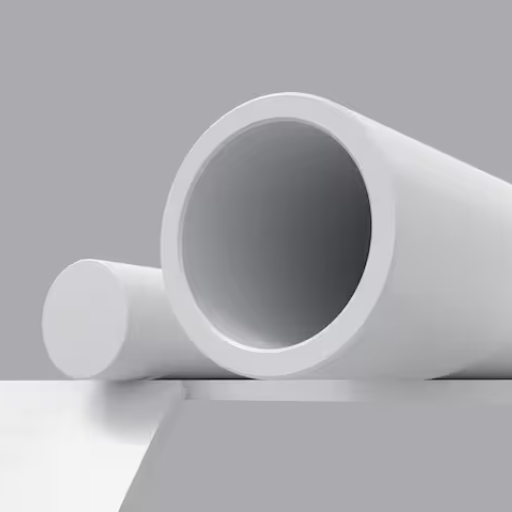
- Automotive Components: POM is used in the manufacturing of gear wheels, fuel system components, and door lock mechanisms for its use of long-lasting material which is also resistant to wear and tear and any types of chemicals.
- Consumer Goods: Found in zips, fastenings, and appliance components, where it is necessary to be strong and precise.
- Industrial Machinery: It is also preferred in industrial machinery such as conveyor systems, industrial gears, and bearings for its low friction and wide modulus.
- Medical Devices: It’s the biocompatibility as well as standing up to such things for sure makes them excellent choices for such things as surgery tools and dentistry inhalers, among several other components.
- Electrical Applications: POM is used for electrical housings, switches and connectors, on condition of its insulating properties and working in dusty conditions.
These applications show the fact that expended uses of POM are also found in the equipment which must deliver high quality services and high mechanical properties.
High-Performance Uses in Industry
POM has become most key for various high-performance applications in industry owing to its mélange of mechanical, chemical, and tribo-logical properties, which has been surprisingly selected. For instance, in the automotive sector, POM is in many fuel components, seatbelt holders, and gear carrier frames, particularly for being able to deal with the fact that the temperature range is –40°F to 200°F. It guarantees the achievement of the design load.
Emerging Applications of POM Materials
- Medical Devices and Surgical Instruments
The medical industry shows another area where POM’s biocompatibility and resistance to processes of sterilization are important. At present, it is possible to employ it in the production of various kinds of medical instruments: high precision surgical equipment, inhalers, insulin pens, and dental elements. It is capable of maintaining its low level of friction throughout a certain time frame owing the fact that the conducting bodies themselves come into close contact. One of the articles found in Materials Science and Engineering (2022) agrees with the fact that there has been a significant increase in the use of POM in the fabrication of medical equipments over the past five years.
- Green Energy Solutions
Under the driving force of renewable resources, the use of Pom in development of solar panel fixing tools and wind turbine mechanics has advanced in the background of temperature and ultraviolet exposure. Its special property of UV light resistance and stiffness help a lot in improving the performance of renewable energy related equipment over a longer period. Moreover, its very low weight encourages efficient transportation and installation of such systems.
- Smart Electronics and IoT Devices
There has been an upsurge in lightweight, long-lasting materials due to the emergence of IoT and smart home goods, and POM is no exception. In particular, POM is being used in the manufacture of housing for sensors, wearables, and connectors on the grounds of its electrical insulating qualities and dimensional stability. The analysis of Global Electronics Material Trends (2023) data also shows POM holding a 15% growth in applications as per the last forecast within this industry.
- Automotive Lightweighting
Additionally, outside of the usual mechanical POM applications, POM is playing a key role in the automotive light weight conversion response to the fuel economy and emission requirements. POM is also widely used in such precision parts as fuel valves, gear to shafts, and electric throttles. Based on the Automotive Materials Annual Report (2023), vehicles with POM in lightweight designs show an average weight reduction of up to 10%.
- 3D Printing and Prototyping
Reference Sources
-
Polyoxymethylene (POM Plastic): Structure & Material Properties
This article discusses the high lubricity, dimensional stability, and sliding properties of POM, making it suitable for high-precision parts.
Read more here. -
POM Material: A Versatile Engineering Plastic
This blog highlights POM as a semi-crystalline thermoplastic with high mechanical strength, dimensional stability, and low friction.
Read more here. -
POM plastic: The versatile material for all your needs
This article explores POM’s excellent mechanical properties and chemical resistance, even against harsh solvents and oils.
Read more here.
Frequently Asked Questions (FAQs)
Q: What is the material properties of polyoxymethylene?
A: Polyoxymethylene (POM) is a strong plastic known for its excellent dimensional stability, low moisture absorption, and high mechanical strength and rigidity. It is a semi-crystalline polymer that exhibits good impact strength and fatigue resistance, making it suitable for various applications such as precision parts and small gear wheels.
Q: How is acetal produced and what are its applications?
A: Acetal, often referred to as polyoxymethylene, is produced through polymerization, typically using anionic catalysis. This results in acetal homopolymers or copolymers that are supplied in a granulated form. POM is widely used in applications requiring good dimensional stability, such as in the manufacturing of precision parts, due to its high tensile strength and versatility.
Q: What are the benefits of using acetal resins in manufacturing?
A: Acetal resins offer numerous benefits, including high impact resistance, excellent dimensional stability, and low moisture absorption. These properties make them ideal for machining using traditional methods such as turning, and they can be used in processes like blow molding to create complex shapes.
Q: Can polyacetal be used in challenging environments?
A: Yes, polyacetal is known for its strong resistance to environmental stress cracking and its ability to maintain performance under challenging conditions. Its low moisture absorption also contributes to its durability in various applications, making it suitable for use in demanding environments.
Q: What is the difference between acetal homopolymer and copolymer?
A: The main difference between acetal homopolymer and copolymer lies in their molecular structure. A homopolymer consists of a single type of monomer, while a copolymer is made from two or more different monomers. This can affect properties such as impact strength and chemical resistance, allowing manufacturers to choose the appropriate type based on specific application requirements.
Q: How does applying heat and pressure affect POM?
A: Applying heat and pressure to POM allows it to be molded into the desired shape, enhancing its versatility in manufacturing. This thermoplastic can be easily processed to create parts for various applications, including those requiring intricate designs and high dimensional accuracy.
Q: What role do UV stabilizers play in acetal plastic?
A: UV stabilizers are added to acetal plastic to enhance its resistance to degradation caused by ultraviolet light exposure. This is particularly important for outdoor applications where prolonged sunlight can lead to environmental stress cracking and a reduction in mechanical properties over time.
Q: What is the significance of Hermann Staudinger’s research on polymers?
A: Hermann Staudinger’s research on polymers laid the foundation for modern polymer chemistry, leading to the development of materials like polyoxymethylene. His work earned him the Nobel Prize in Chemistry and has significantly influenced the understanding and production of strong plastics such as acetal and its various applications in industry.















